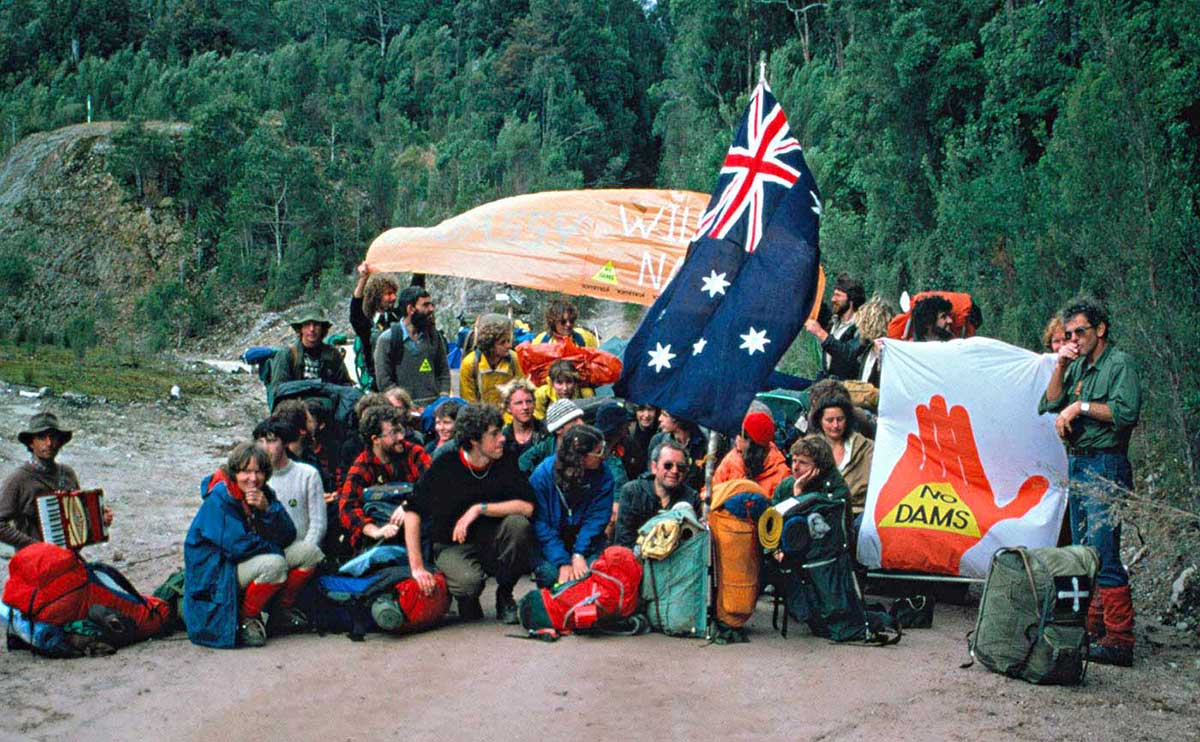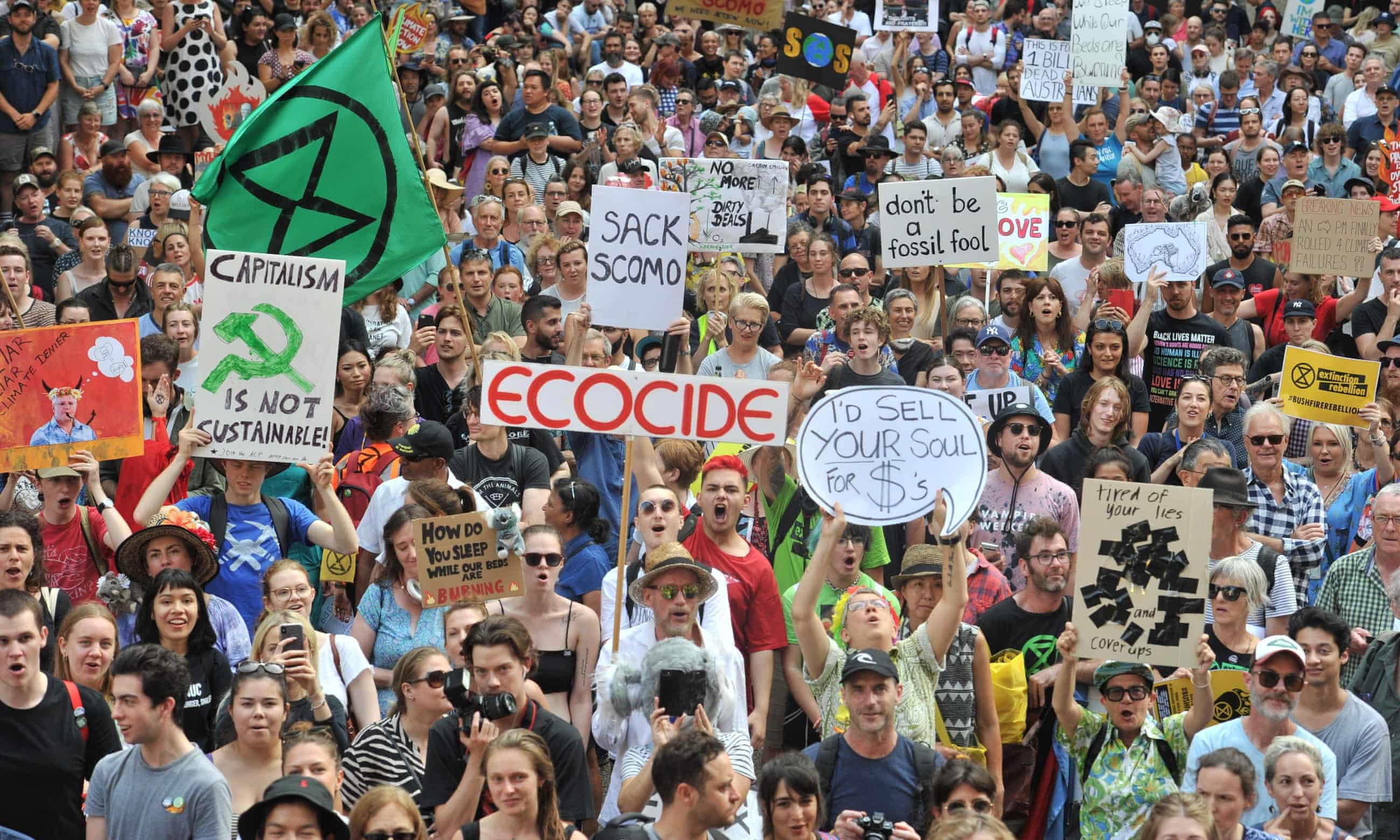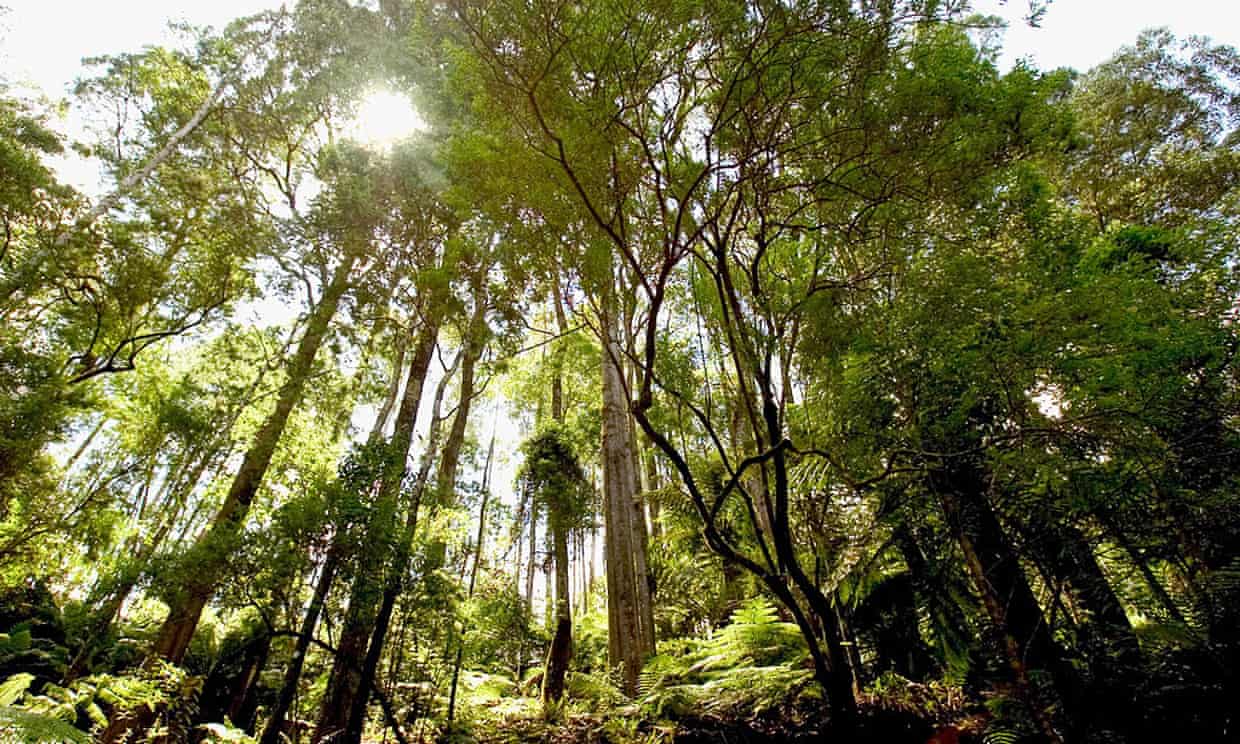So, I've looked at the climate science of forests and woodlands, and what part deforestation and bushfires have played and will play in climate change. In this post, I'll talk more about the climate politics of how we can get on the right track, the track into more woods.
What can we do to change our path?
Peter Camejo's classic speech from the Vietnam war era, Liberalism Ultraleftism or Mass Action, has been a guiding light for me ever since I came across it. So I'm going to group the current and historical campaigns to stop deforestation and protect our woodlands into those three broad categories - liberal, ultraleft, or mass action strategies.
Liberal strategies for stopping deforestation revolve around appealing to the good conscience of the ruling class of society. This can mean appealing to the government to pass better laws to protect the environment, activists chanelling their energy into petitions or utilising the existing laws; it can also mean appealing to the capitalists doing the deforesting directly.
An example of the latter is the current Wilderness Society asking you to sign mass letters to the CEOs of major companies, demanding that they make policies or statements to remove deforestation from their supply chain. The WWF's Global Forest & Trade Network is another example, creating a market for responsible forestry. These tools might sometimes work - I like to believe that most people have a good heart, after all - but in a capitalist society, where competition and the profit motive are hard wired into the system, any business who choses a more expensive means of production on moral grounds risks being undercut by those who aren't so ethical.
The former kind of campaign includes the Nature Conservation Council's campaign to declare a moratorium on logging in public forests. Again, petitioning the people in government in a capitalist society, who almost always see their job as upholding the dominant class interests in society, is only going to lead to slow, incremental change unless they think the issue is going to win or lose them an election - and that is largely determined by a news media world growing ever more determined to uphold the class interests of those in power themselves.
The best a liberal campaign asking the government for action can deliver is Victoria's ban on old growth logging in 90,000 hectares of the state; the plan has a sunset clause for existing logging activities until 2030, and green groups have concerns that the new zoning might reclassify areas currently considered "old growth". It's identifying the path we need to go down, but leaving the real kilometres of it to a future government, when it has the power to take that path today.
 |
| Protesters at the Franklin River, 1982 |
Then, there are ultraleftist strategies. They reject liberal ideas about appealing to the good will of the ruling class, and don't want to work within the boundaries of the democratic system. But they still don't see an alternative to the power of the ruling class or the government; instead, they involve generally small numbers of people in militant tactics that "break the rules", hoping to convince the ruling class that the cost of doing business in this way is too high. These tactics always appeal to those looking inward, within a small radicalised community, and trying to find some shortcut to change.
The most succesful example of this kind of strategy is Miranda Gibson's tree-sit to protect Tasmania's forests. She climbed up a tree in an area scheduled for logging in December 2011, putting her body in the way of the saws to demand the Styx valley, home to the world's tallest hardwood trees, be added to Tasmania's World Heritage Area. After over a year of her sit, with international attention on the cause, the Federal government announced an extra 170,000 hectares of forest would be nominated for protection. Gibson still holds the record for the longest tree-sit in Australian history, at an astonishing 449 days.
As great a victory as this was for Australia's woodlands, these kinds of tactics alone cannot protect forests for good. Companies will gladly sit out individual actions, or even empowered communities. This is apparent in the bid by Tony Abbott's following government to have the forest delisted - thankfully, one which failed. But they will try again.
Gibson's campaign gained so much success because part of her strategy was also to share her story, via solar-powered computer, and win mass support for the campaign. And this brings us to the third strategy for change identified by Camejo: independent mass action.
 |
| Bushfire crisis protest in Sydney, January 2020 |
An independent mass action strategy aims to challenge the power of the ruling class - not by activists going through the democratic channels, or by making small militant actions, but by looking to the other great class power in society - that of the working classes. Its aim is to draw the great masses of society into struggle themselves, not struggle on their behalf. It aims to break the rules - not the laws that say we can't protest on private property, but the fundamental rules about who owns society.
The simplest understanding of an independent mass action strategy is that it aims to call mass street rallies. And this is an important tactic; for the environment movement, the most recent examples of mass rallies which cut through the white noise and brought masses into action in Australia are the #climatestrike and School Strike 4 Climate actions of late 2019. They were followed up by the bushfire emergency rallies demanding the government do more - to protect the people, and landscapes, vulnerable to climate change through better funding for emergency services and meaningful climate action. Those Australian and global mass actions, while unsustained, have led to a real shift in the conversation on climate change in this country.
However, independent mass actions don't only mean the one tactic of street rallies. They can use any particular form of activism that brings masses into action, with a goal of exercising their own power, rather than appealing to the ruling class.
Worker's struggle, in the form of strikes, is another key tactic in a mass action perspective. Today in Australia strikes are only allowed while negotiating a new agreement, but we have a proud history of worker's strikes for the environment in the form of green bans - the campaign by the Builders Labourers Federation (BLF) to protect parklands and historic sites within Sydney. In the initial fight to protect Kellys Bush Park, the workers threw down the gauntlet to developer AVJennins:
If you attempt to build on Kelly's Bush, even if there is the loss of one tree, this half-completed building will remain so forever, as a monument to Kelly's Bush.Today is a sad day for that history; Jack Mundey, the leader of the NSW BLF through those struggles, has passed away at age 90. May he rest in power.
We have lost a champion for the planet and for working people. Jack Mundey, a comrade and a leader, who saved so much of our heritage with the Green Bans movement died last night. Rembering him and thinking of his family today. Thanks Jack. Thanks so very much.— David Shoebridge (@ShoebridgeMLC) May 10, 2020
The green bans campaign was one of the most effective forms of independent mass action ever used in Australia. It utilised the independent power of the workers, uniting with environmental and anti-corporate activists, against the wishes of capital - tying up $3 billion (in 1974 AUD) of investment. This independent mass action had to be quashed, and so the federal leadership of the union intervened, standing down Mundey and ending the policy of green bans. Of course, it later turned out the federal leader of the BLF, Norm Gallagher, was taking bribes from the construction bosses, leading to the closure of the BLF and its replacement by the CFMEU.
The CFMEU is militant in action for wages, but it has inherited the anti-environmental perspective of the latter BLF. Taking down the "24 hour construction sites" and pro-fossil fuel bureacracy of the CFMEU is a key struggle for climate activists. A CFMEU green ban ban on cutting down old-growth forests would bring the industry to a meaningful halt, and stop devestating climate change. The CFMEU leadership might be deluded enough to think climate change isn't an issue that will impact blue-collar workers in Australia, or that they can't adopt a more radical stance - but the history of the BLF shows otherwise.
These campaign strategies or orientations are far from exclusive - and they can sometimes bleed over into each other, or be complimentary. Individual tactics can fit into any of the three perspectives. Mass rallies can make liberal demands, direction action tactics can compliment legal or mass campaigns. Miranda Gibson's tree-sit did exactly this. And Tasmania's best-known fight to protect the environment, the fight to stop the Franklin Dam, utilised all kinds of tactics - including a write-in campaign on the 1981 state referendum that won an astonishing 45% of the vote.
So, what should you do right now?
I encourage everyone to get involved in all of the above kinds of campaigns to protect our forests as much as they feel is right. From my point of view, though, both the severity of the climate crisis and the centrality of capitalism in the crisis, mean we must take a mass action approach to climate activism.

No comments:
Post a Comment